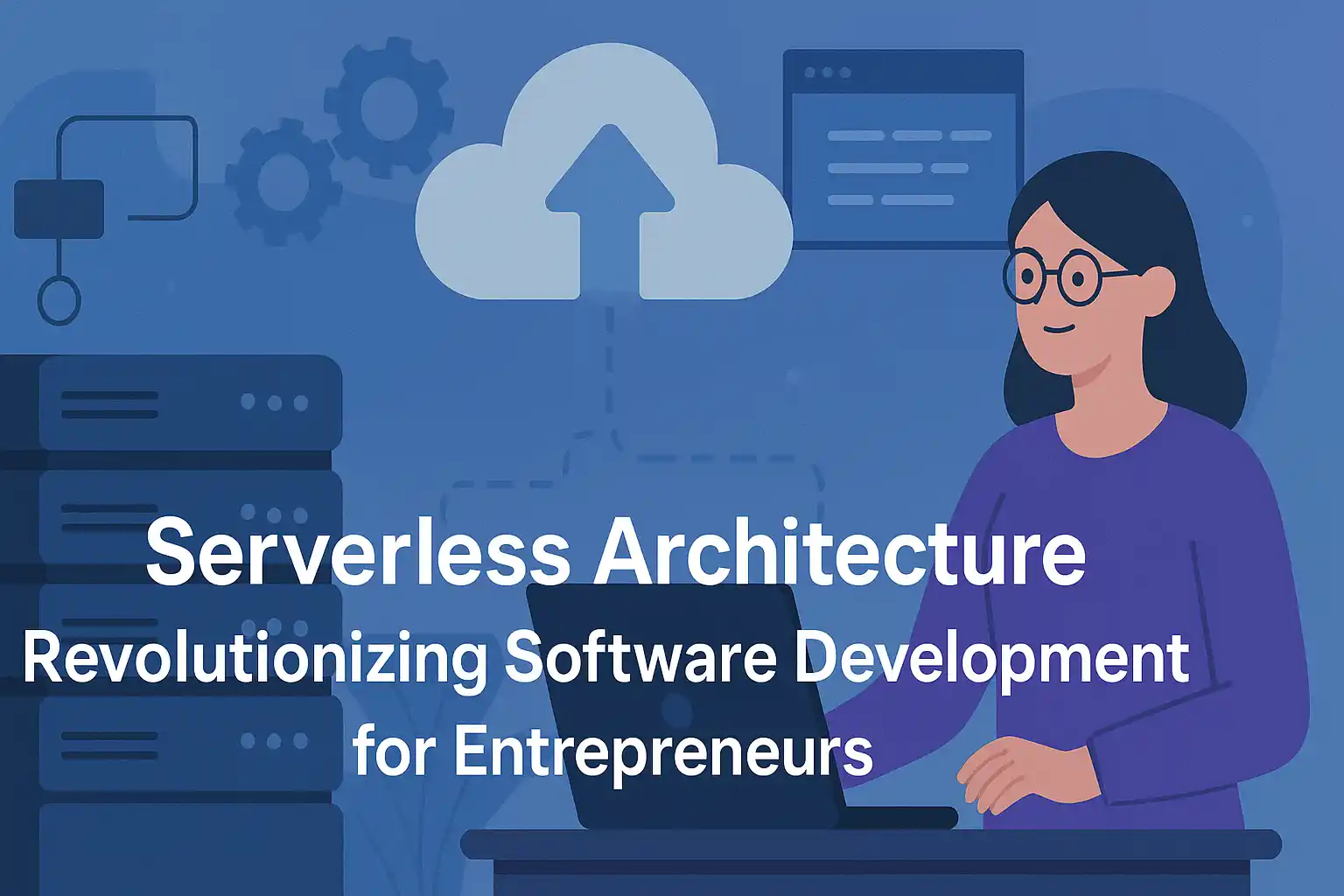
Sarthak Tyagi
Web Developer | AWS Cloud Architect

Discover how serverless architecture transforms software development for startups and businesses. Explore its benefits, detailed pricing, cost savings, scalability, and real-world applications with statistics and comparisons for founders and entrepreneurs.
As a founder, business owner, or entrepreneur, you’re constantly balancing innovation, speed, and cost. Traditional server-based development often demands hefty investments in infrastructure, skilled DevOps teams, and ongoing maintenance. Serverless architecture flips this model, letting you build and scale applications without managing servers. By leveraging cloud providers like AWS, Azure, or Google Cloud, you pay only for what you use, freeing up resources to focus on growth and customer experience.
This blog dives into serverless architecture, its benefits, challenges, and detailed pricing for major platforms, tailored for entrepreneurs. Backed by statistics and comparisons, we’ll show how serverless can give your startup a competitive edge.
Serverless architecture is a cloud computing model where developers write and deploy Function-as-a-Service (FaaS) code without managing servers. Cloud providers like AWS Lambda, Azure Functions, and Google Cloud Functions handle infrastructure, scaling, and maintenance. Your code runs in response to events—think HTTP requests, database updates, or file uploads—and you’re billed only for the compute time used.
While servers still exist, they’re abstracted away, letting you focus on coding and innovation. This pay-per-use model and automatic scaling make serverless a game-changer for startups with variable workloads or tight budgets.
Serverless aligns perfectly with the needs of fast-moving, resource-constrained businesses:
Companies like Netflix, Nordstrom, and MindMup have leveraged serverless to streamline operations and boost profitability, proving its value for entrepreneurs.
Serverless is gaining traction rapidly. Here’s the data:
These stats highlight why serverless is a strategic choice for cost-conscious entrepreneurs.
Let’s compare serverless to traditional server-based architectures and microservices across key metrics:
| Metric | Serverless | Traditional Server-Based | Microservices |
|---|---|---|---|
| Infrastructure Management | Fully managed by cloud provider. | Manual provisioning, patching, maintenance. | Partial management; DevOps needed for orchestration. |
| Cost Model | Pay-per-use; no cost for idle time. | Fixed server costs, even when idle. | Pay for container runtime, even underutilized. |
| Scalability | Automatic, instant scaling to zero or millions. | Manual or rule-based scaling; slower. | Autoscaling possible but requires tuning. |
| Development Speed | Faster; focus on code, not infrastructure. | Slower due to server setup. | Moderate; managing microservice dependencies. |
| Maintenance | Minimal; provider handles updates, patches. | High; ongoing server maintenance. | Moderate; container updates needed. |
| High Availability (HA) | Built-in HA and disaster recovery. | Requires additional setup for HA/DR. | HA possible but needs complex configurations. |
| Statelessness | Inherent; state managed externally. | Stateful sessions; state in memory. | Can be stateful or stateless. |
| Cost Example (1M Requests) | ~$0.20–$0.50 (AWS Lambda). | ~$50–$100 (EC2 instance, 1 month). | ~$20–$50 (Kubernetes cluster). |
This table shows serverless’s edge in cost, scalability, and simplicity, making it ideal for startups.
Understanding pricing is critical for entrepreneurs. Below is a detailed breakdown of costs for leading serverless platforms, based on 1 million requests per month, with 128MB memory and 100ms execution time per request (as of June 2025). Note: Pricing varies by region and usage; always use provider calculators for precision.
| Platform | Provider | Pricing Model | Cost for 1M Requests | Additional Costs |
|---|---|---|---|---|
| AWS Lambda | Amazon | $0.20 per 1M requests + $0.00001667 per GB-second of compute time. | ~$0.20 (requests) + $0.17 (compute) = $0.37 | Data transfer: $0.09/GB; DynamoDB: ~$1.25/TB. |
| Azure Functions | Microsoft | $0.20 per 1M executions + $0.000016 per GB-second. | ~$0.20 (executions) + $0.16 (compute) = $0.36 | Storage: $0.033/GB; Bandwidth: $0.087/GB. |
| Google Cloud Functions | $0.40 per 1M invocations + $0.0000025 per GB-second (1st gen). | ~$0.40 (invocations) + $0.25 (compute) = $0.65 | Networking: $0.085/GB; Firestore: ~$0.18/GB. | |
| IBM Cloud Functions | IBM | $0.000017 per GB-second; no per-request charge for first 5M invocations/month. | ~$0.17 (compute) = $0.17 (if <5M requests).NS | Storage: $0.02/GB; Data transfer: $0.08/GB. |
Notes:
Example Total Cost (1M requests, 100ms, 128MB, 1GB data transfer):
These figures highlight IBM’s cost advantage for low request volumes and the tight pricing competition between AWS and Azure.
Serverless delivers real results for businesses:
These examples show how serverless drives efficiency and scalability for startups and enterprises alike.
Serverless isn’t perfect. Consider these challenges:
Mitigate these with optimized function design, robust monitoring, and multi-cloud strategies.
Here’s how entrepreneurs can adopt serverless:
Cloud consultants like Appinventiv can streamline your transition.
Serverless is evolving:
These trends offer entrepreneurs new ways to innovate.
Serverless architecture empowers entrepreneurs to build scalable, cost-efficient applications without infrastructure headaches. With costs as low as $0.17–$0.74 per million requests, potential savings of 70%, and a market set to hit USD 50.86 billion by 2031, serverless is a must-consider strategy. Start small, optimize costs, and leverage platforms like AWS or Azure to stay ahead.
Ready to transform your startup? Which serverless platform are you exploring, and why?